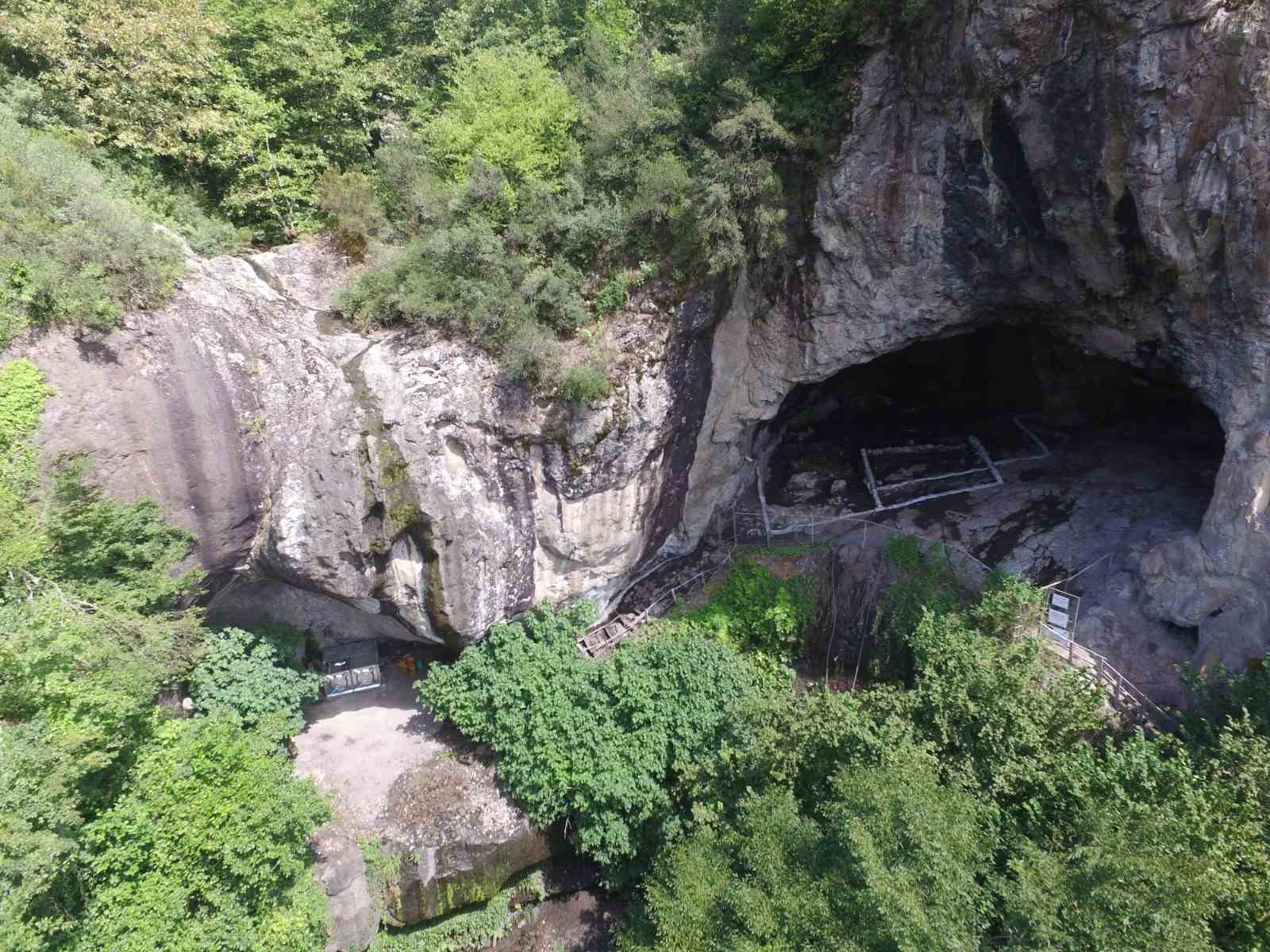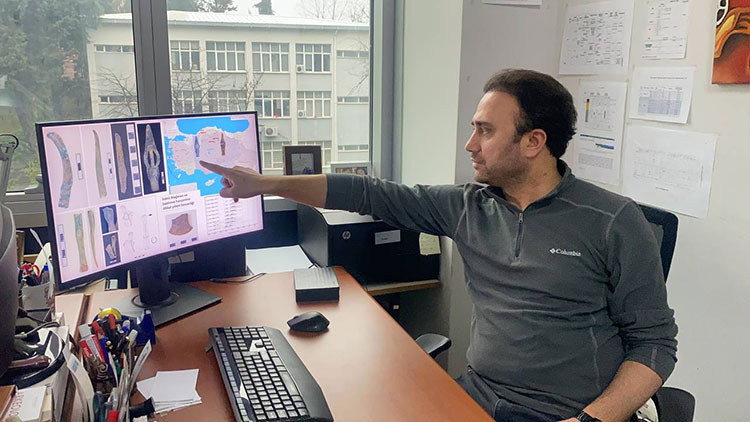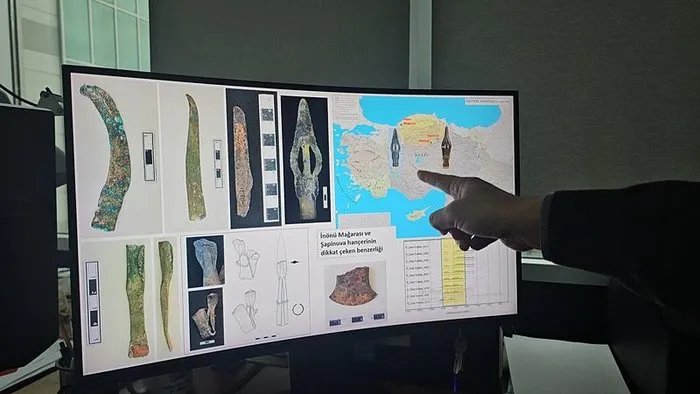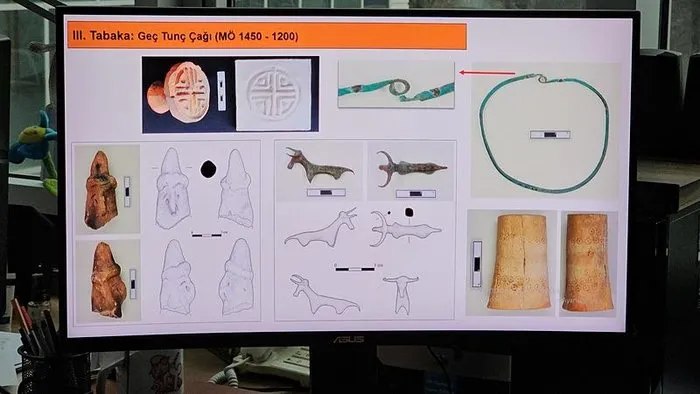
First archaeological evidence of the Kaskas, the Hittites’ fierce enemies, discovered
The Kaskas, known as the relentless enemies of the Hittites who established the first central state in Anatolia, have long remained shrouded in mystery. Residing in the Black Sea region, these tribes continuously launched raids into Hittite territory, becoming a persistent thorn in their side. Until now, archaeological findings related to the Kaskas had not been uncovered, with limited information available only through Hittite cuneiform texts.
First archaeological findings of the Kashkas
In 2017, excavations initiated by the Bülent Ecevit University (BEUN) Archaeology Department at the Inönü Cave in the Ereğli district of the Black Sea region led to the discovery of the first archaeological traces of the Kaskas, one of Anatolia’s lost communities.
Excavation leader Assoc. Prof. Dr. Hamza Ekmen stated, “We believe that the findings, dating back approximately 3,200 years to the Late Bronze Age, are associated with the Kaskas communities we have mentioned.”

Significant Discoveries in Inönü Cave
The Inönü Cave contains five archaeological layers, the oldest of which dates back 6,500 years. Assoc. Prof. Ekmen highlighted that particularly remarkable findings were made in the third layer, dated to the Late Bronze Age, suggesting a potential connection to the Kaskas communities mentioned in Hittite texts but previously lacking archaeological evidence.
Ekmen emphasized, “We believe we have reached the first archaeological traces of the Kaskas, a community that scholars have been searching for documents about for over a century.”

He elaborated on the discoveries made during the excavations, stating, “We have identified five distinct archaeological cultural layers in the Inönü Cave. The fifth layer, dating back 6,500 years, represents the earliest inhabitants of the cave. In recent years, we have made significant archaeological discoveries, particularly in the third layer, which are related to the Kaskas communities that have been referenced in Hittite cuneiform texts.”
A seal with features similar to Hittite stamp seals and a dagger similar to the dagger found in Şapinuva were discovered in the cave.

Assoc. Prof. Hamza Ekmen stated that the findings represent the first evidence of the lost society of Anatolia, the Kaskas. ‘We are conducting our excavations in a relatively small area and we think that the inhabitants of the third layer of the cave took precautions against the spring waters in the cave. They laid wooden planks on the cave floor and may have lived on these structures or used them for storage purposes.
Many artefacts made of metal, clay and bone were found on these wooden structures. The quantity of these artefacts is quite large. When we evaluate them with a comparative method known as analogy, we see that each object closely resembles the objects found in Hittite cities. Therefore, when we evaluate all these findings together, we can say that we have obtained important clues pointing to the first archaeological evidence of this lost community in Anatolia.’
You may also like
- A 1700-year-old statue of Pan unearthed during the excavations at Polyeuktos in İstanbul
- The granary was found in the ancient city of Sebaste, founded by the first Roman emperor Augustus
- Donalar Kale Kapı Rock Tomb or Donalar Rock Tomb
- Theater emerges as works continue in ancient city of Perinthos
- Urartian King Argishti’s bronze shield revealed the name of an unknown country
- The religious center of Lycia, the ancient city of Letoon
- Who were the Luwians?
- A new study brings a fresh perspective on the Anatolian origin of the Indo-European languages
- Perhaps the oldest thermal treatment center in the world, which has been in continuous use for 2000 years -Basilica Therma Roman Bath or King’s Daughter-
- The largest synagogue of the ancient world, located in the ancient city of Sardis, is being restored











Leave a Reply